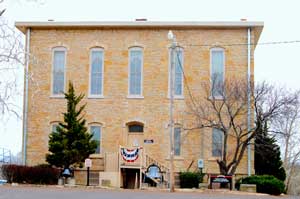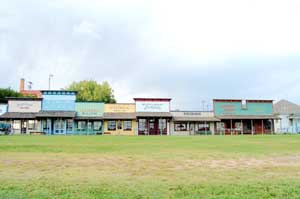Northeast Kansas
South-Central Kansas
Southeast Kansas
Southwest Kansas
Geographical Regions
Kansas offers a subtly diverse range of geological sites of interest and scenery, from sweeping High Plains and rolling hills to tucked-away springs and caves.
Though many who drive through Kansas say, “It’s flat and boring, ” it’s NOT! When questioned, they also admit that they have never traveled on roads other than interstates and rarely stopped, except perhaps in a few cities.
Kansas is not flat. What travelers crossing Kansas on I-70 don’t realize is that the elevation changes from 760 feet on the east to 3,910 feet by the time they reach the Colorado border.
Rugged canyons, towering chalk formations, short-grass prairies, numerous lakes and bluffs, wide-open farmland, mushroom-shaped rocks, wetlands, and more can be seen in the various regions of Kansas.
The vast history of the Sunflower State is also not typically found in cities or along interstates.
Long before Kansas became a territory or a state, the area was making a historical name for itself. Fort Leavenworth, established in 1827, was the first settlement in the area and is now the oldest active Army post west of the Mississippi River. Travelers were making their way through Kansas along the Santa Fe Trail in 1821, and emigrants regularly stopped at the site of Council Grove as early as 1825. The Oregon Trail, developed by fur traders in the 1830s, makes its way across northeast Kansas, followed by the California Trail in the 1840s and the Pony Express in the 1860s. Original Pony Express stations can still be seen in Marysville and Hollenberg. Fort Larned, a National Historic Site today, was built in 1859 to protect travelers along the Santa Fe Trail.
Leavenworth, founded in 1854, was the first city incorporated in the Kansas Territory. The city developed south of Fort Leavenworth, which Colonel Henry Leavenworth established as Cantonment Leavenworth in 1827.
History of the Bleeding Kansas days of Territorial Kansas, which was a precursor of the Civil War, can be found in the northeast part of the state and along the eastern border at Lawrence, Atchison, and Lecompton, where the one-time pro-slavery capital continues to stand; at Fort Scott, a National Historic Site; and at several other sites.
When the Civil War was over, and the railroads came through, several cowtowns were born, including Abilene—the Queen of the Kansas Cowtowns, the Wicked Town of Dodge City, Ellsworth, and others that left behind museums and other traces of Wild West life in Kansas.
Nicodemus, an African-American pioneer town established in north-central Kansas in 1877, still stands and is a National Historic Site today.
These and many more historic sites and places of interest can be found in the state once travelers get off the major highways and take the two-lane roads.
©Kathy Alexander/Legends of Kansas, updated April 2025.
Also See:
Sources:






